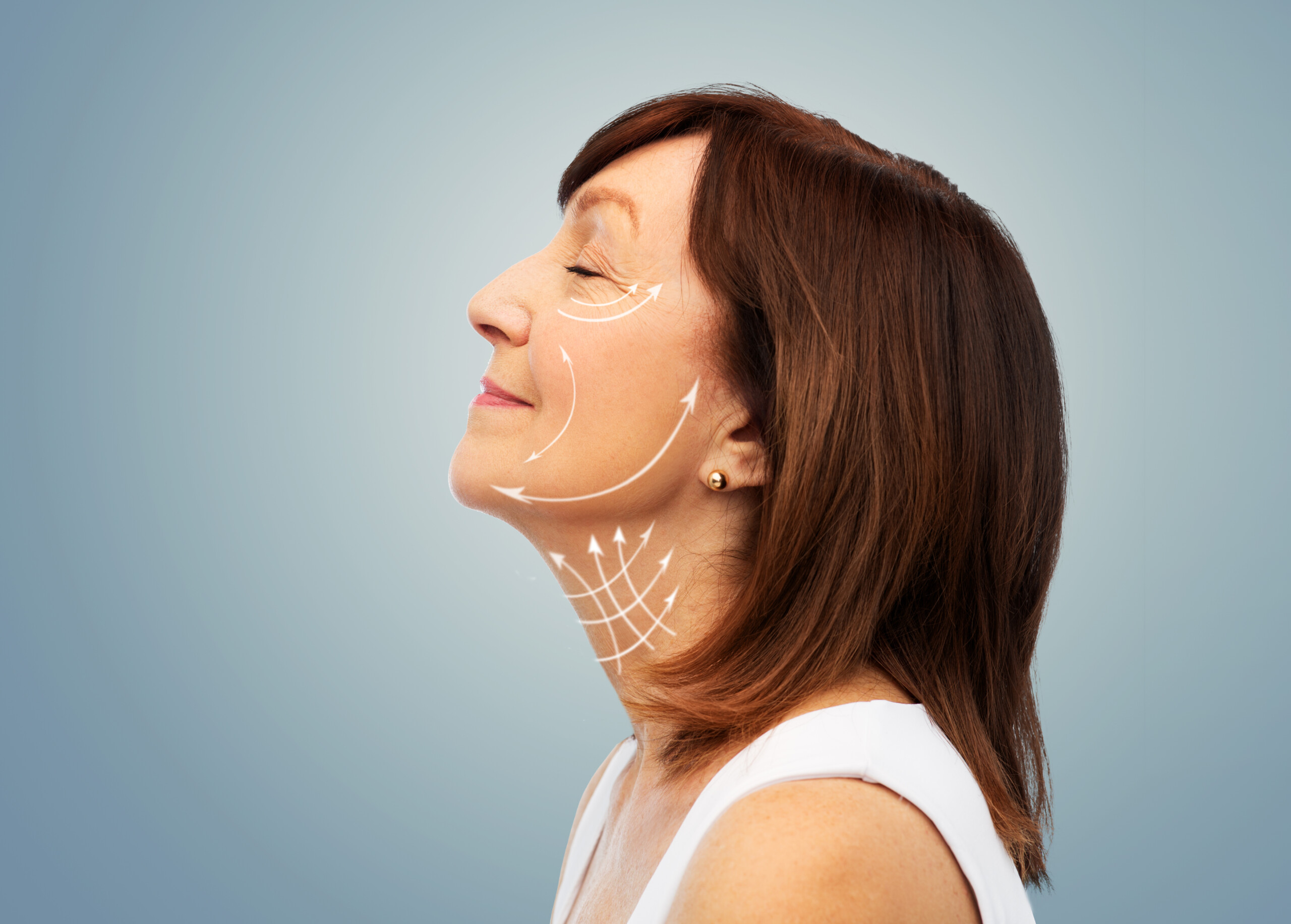Rhytidectomy, otherwise known as a facelift, is a common type of cosmetic surgery that improves the visible signs of aging in your face and neck. That said, there is no difference when it comes to rhytidectomy vs. facelift. However, prospective patients should note that there are several types of facelift surgeries, so talking to a board-certified surgeon about your options is important. Generally speaking, facelifts are a common cosmetic surgery and usually have high satisfaction rates. A good candidate for the procedure should be in good physical and mental health. In addition, he or she should consider all the risks associated with facelift surgery. Be sure to consult a surgeon you trust and discuss your expectations for the procedure. Together you’ll decide on the type of surgery that works best for you and your goals.
What is a rhytidectomy?
There is no difference when it comes to rhytidectomy vs facelift. In fact, they are one and the same. A rhytidectomy is commonly referred to as a facelift. It is a general term for any surgical procedure that improves signs of aging in your face and/or neck by repositioning or removing skin, fat, and/or muscle.
Different types of facelift procedures
If you are considering a facelift, you should know that there are a few different types of procedures. Determining which approach is best for you depends on your unique goals and overall health and wellness. Your plastic surgeon can discuss these types of facelifts with you. He or she will walk you through the benefits and risks of each procedure, and ultimately, help you decide which is best for you.
- Traditional facelift: A traditional facelift surgery involves incisions around your ears, hairline, and below your chin. A surgeon separates your skin from the underlying tissues and tightens the muscles and other supporting structures of your face and neck. The surgeon then removes excess fat in your neck and jowls, re-positions your skin over your face, and removes any excess skin.
- SMAS facelift (SMAS rhytidectomy): A SMAS facelift targets the lower two-thirds of your face. SMAS stands for the superficial musculoaponeurotic system, which is the muscular layer of your face. In this surgical procedure, a surgeon tightens your muscle and trims the excess skin and/or fat in your cheeks and lower face.
- Deep plane facelift: In a deep plane facelift surgery, a surgeon lifts the SMAS, fat, and skin as a single unit. Deep plane lifts generally address multiple areas of your face at the same time.
- Mid-facelift: A mid-facelift surgery treats the cheek area of your face. A surgeon repositions the fat in your cheek and tightens the skin in your cheek area.
- Mini-facelift: Mini-facelift surgeries focus on lifting your lower face and neck area. It’s a quicker and less invasive surgery than other facelift surgeries. Surgeons usually recommend mini-facelifts to people who are younger and only have early signs of facial sagging.
- Cutaneous (skin) facelift: Cutaneous facelifts involve your skin only and usually focus on your neck and lower face.
Will a facelift change my whole face?
The simple answer to this question is no, a facelift will not change your entire face. In other words, you will still look like yourself. However, if you have any of the following signs of aging, a rhytidectomy or facelift can resolve them for you and yield a more youthful appearance.
- Relaxed, sagging skin on your face
- Deep fold or crease lines between your nose and the corners of your mouth
- Facial fat that has fallen or is lacking
- Drooping skin on your cheeks and jaw
- Loose skin and extra fat in your neck, otherwise known as a “double chin”
Am I a good candidate for a facelift?
In short, only a board-certified plastic surgeon can help you determine if you are a good candidate for a rhytidectomy. Note that your age isn’t necessarily the most important factor in making this decision. Note that most facelift patients undergo their procedure in their 40s, 50s, or 60s, as signs of aging begin. There’s no “best age” to get a facelift because everyone ages differently from various factors such as genetics, lifestyle, and environment.
Facelift surgery reduces the signs of aging by targeting several “problem” areas in the mid to lower face and neck. The best candidates for facelift surgery have at least one of the following:
- Sagging of the skin and underlying muscles from the cheeks to the jawline
- Sagging along the jawline that creates jowls
- Volume loss in the cheeks and around the mouth
- Loose or “folding” skin on the neck
- Wrinkles around the nose and mouth
Rhytidectomy vs. Facelift: Dr. Berlet Can Help
Discuss your rhytidectomy with a qualified, board-certified plastic surgeon. Working with an experienced cosmetic surgeon who has experience with the procedure is important. He or she should be able to walk you through your options, explain the benefits of the procedure, set your expectations, and show you before-and-after photos from previous clients. Most importantly, your surgeon should be able to answer any lingering questions you may have about facelifts before you make a big medical decision. Your choice of surgeon should put your mind at ease. Dr. Anthony Berlet has been serving patients in the northern NJ and New York City areas for over 20 years. To learn more about how we can help you, contact us!
